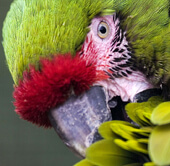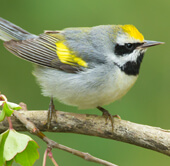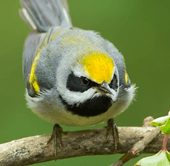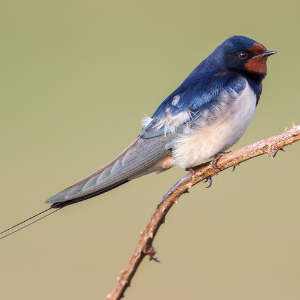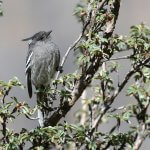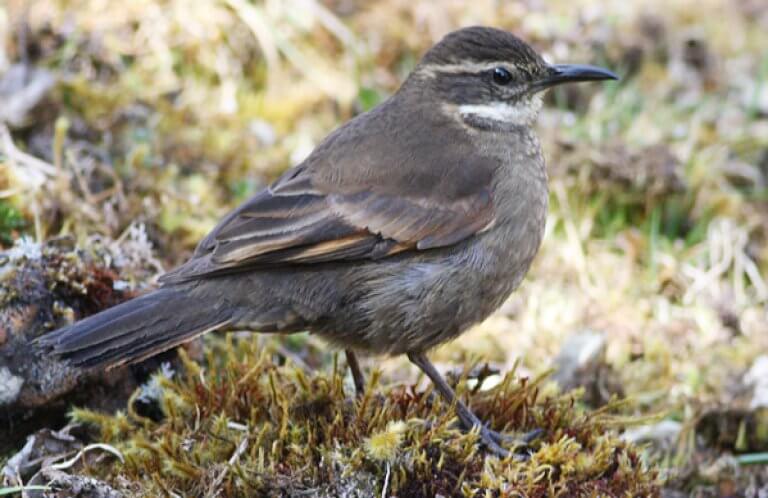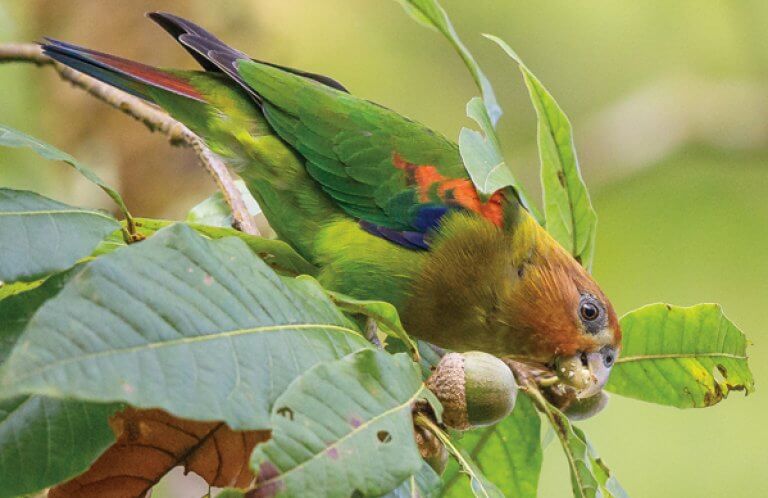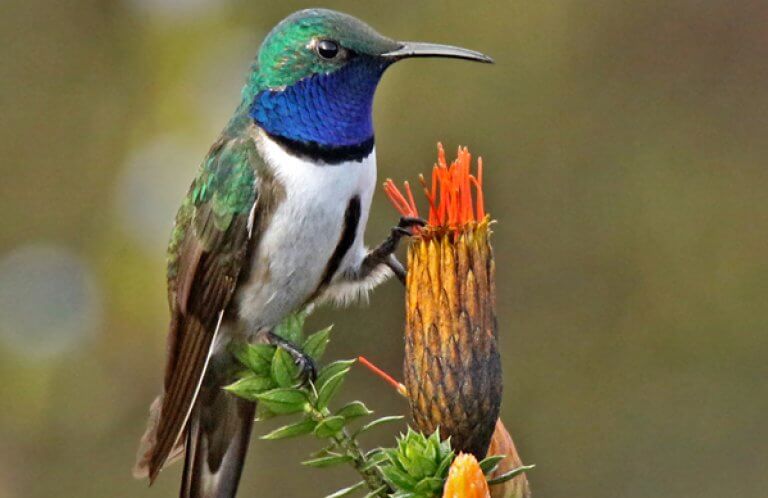About the Ash-breasted Tit-Tyrant
The Ash-breasted Tit-Tyrant is a small, active gray bird with a very limited range, found only in the high Andes of Peru and Bolivia. It is one of only a few groups of small flycatchers that occur at such high altitudes.
This bird's appearance is reflected in the name “ash-breasted.” The word “tyrant” acknowledges its inclusion in the huge tyrant flycatcher family, which contains hundreds of species across the Americas, ranging from the Johnson's Tody-Flycatcher to the Western Kingbird.
The Ash-breasted Tit-Tyrant was given the added epithet of “tit” due to its small size and lively ways, which reminded researchers of members of the Paridae family (known as “tits” in Europe) such as the Carolina Chickadee and Tufted Titmouse. Despite appearances, the Ash-breasted Tit-Tyrant is not related to birds of this family.
Songs and Sounds
Calls of this species are rough and rather burry-sounding; one is a rising note followed by short, descending notes.
Breeding and Feeding
First described by Harold Greeney in 2013, the nest of the Ash-breasted Tit-Tyrant is a deep, compact cup of moss thickly lined with feathers, which provides insulation from cold alpine temperatures and may also help camouflage the eggs and chicks. It builds its nest approximately 4.5 feet above ground within a hanging epiphyte clump.
The female Ash-breasted Tit-Tyrant lays a clutch of two to three white eggs, which she incubates for almost two weeks. Both parent birds appear to feed the nestlings.
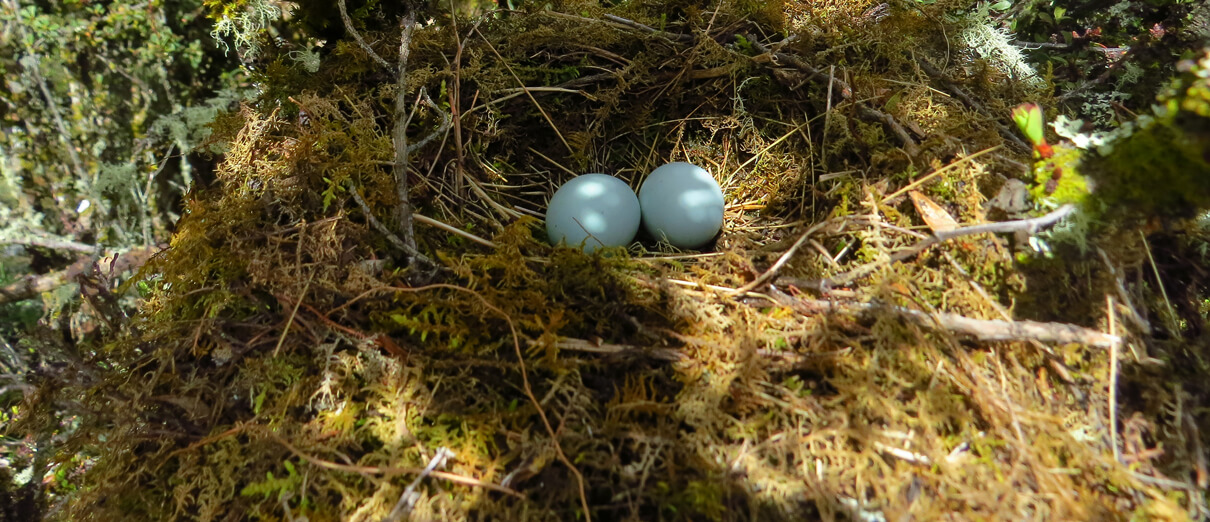
The Ash-breasted Tit-Tyrant has been observed foraging alone, in pairs, or in family groups. Much remains to be discovered about its breeding biology. However, this species is presumed to be socially monogamous, like other members of its genus.
Ash-breasted Tit-Tyrants are insectivorous, actively gleaning along outer tree branches for prey, particularly soft-bodied caterpillars. It also sallies out after flying insects in the manner of other flycatcher species.
Region and Range
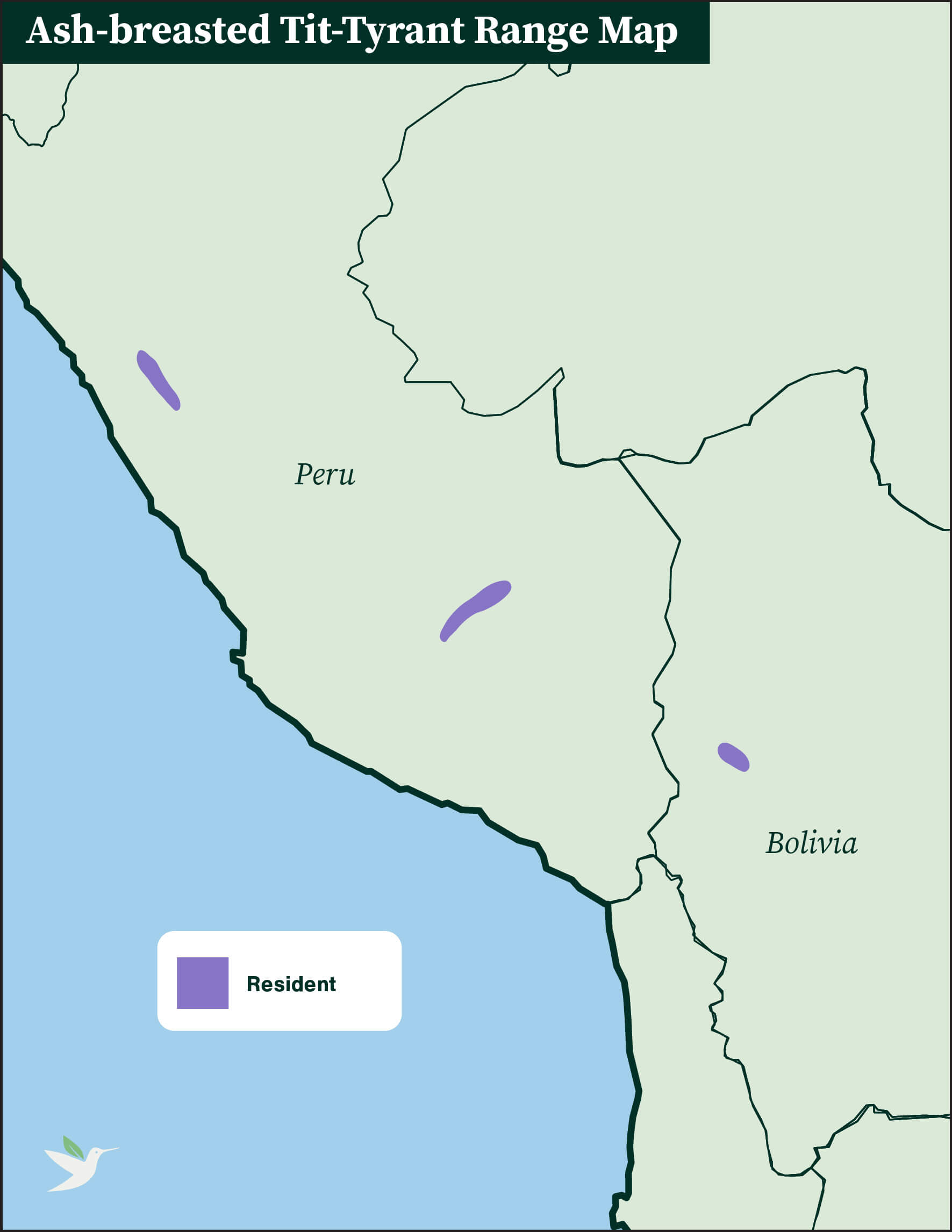
Two subspecies of Ash-breasted Tit-Tyrant are found in two separate populations across the Andes of Peru and Bolivia. One subspecies occurs on the western slope of the Andes in northern Peru; the other is found in southeastern Peru and northwestern Bolivia.
Conservation of the Ash-breasted Tit-Tyrant
Due to loss of its Polylepis habitat, a small population size, and a fragmented range, the Ash-breasted Tit-Tyrant is classified as Endangered on the International Union for Conservation of Nature (IUCN) Red List.
Overgrazing and the uncontrolled use of fire prevent Polylepis regeneration. Wood cutting for timber, firewood, and charcoal also poses a threat to this important habitat. Exotic tree species such as eucalyptus also displace native trees. A changing climate could also affect habitat and food availability for the Ash-breasted Tit-Tyrant.
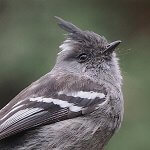
Help support ABC's conservation mission!
ABC works with Peruvian and Bolivian partners, including Asociación Ecosistemas Andinos (ECOAN) in Peru and Asociación Armonía and Instituto de Ecología in Bolivia, to increase protections for this species.
We continue to support work by ECOAN in Peru and Armonía and the Instituto de Ecología to protect and restore Polylepis woodlands for the Ash-breasted Tit-Tyrant.
In both Peru and Bolivia, we have assisted our partners in providing fuel-efficient stoves in communities to reduce demand for fuel wood and alleviate pressure on habitat for endangered birds.
ABC and partners have also established nine community-owned and managed Private Conservation Areas covering more than 21,000 acres to protect and restore threatened Polylepis woodlands.
Get Involved
Many of the rarest bird species in the Western Hemisphere remain relatively unknown. You can learn more about these birds and the threats they face by signing up for ABC's Bird of the Week email series, which frequently highlights these fascinating birds.
American Bird Conservancy and our partners throughout Latin America and the Caribbean have created and expanded more than 100 bird reserves, which protect upward of 1.1 million acres of vital habitat. Together, we've planted more than 6.8 million trees, helping to restore degraded and damaged habitat. You can help us continue to protect endangered birds by making a gift today.










